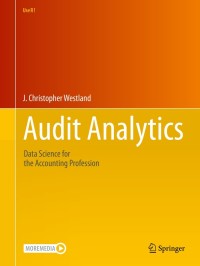
3. Using data on annual earnings and fringe benefits (vacation days, insurance, etc.), we estimate the following three models: annbens = 1223.76 +1045.897 male (84.714) (105.79) n = 616, R2 = 0.137, R2 = 0.136 (1) annbens = 517.735 +594.112 male - 14.24 exper + 0.0606 annearn +61.911 tenure (96.174) (98.389) (4.504 (0.005) (6.844) n = 616, R2 = 0.372, R2 = 0.368 (2) annbens = 31.987 +264.594 male + 62.045 exper+0.0595 annearn + 47.141 tenure-1.769 expersq (137.109) (166.055) (12.905) (0.005) (6.749) (0.274) +236.12 union+363.812 union.male+9.246 male. exper (172.059) (200.42) (8.209) n=616, R2 = 0.442. R2 = 0.435 (3) annbens male exper expers annearn tenure union Annual benefits such as Value of Vacation Days, Sick Leave, Insurance, and Pension (in USD) Male (= 1 if male) Years Work Experience exper2 Annual Earnings (in USD) Years with Current Employer Union Member (= 1 if union member) (a) Do a difference in means test using model (1). State the null and alternative hypotheses and interpret your results. (b) Marcus and Yukun work for the same company. Both Marcus and Yukun have 20 years of work experience. Both are union members, and each earn the same annual salary. Yukun is comparing the value of her annual benefits (annbens) to Marcus' value. How many more years must Yukun have worked at this company than Marcus in order for her to have the same value of annual benefits as he does? Use model (3) to predict this. (c) What do you make of the changed sign on exper between models (2) and (3)? What is the optimal number of years of experience for a woman in model (3)? 3. Using data on annual earnings and fringe benefits (vacation days, insurance, etc.), we estimate the following three models: annbens = 1223.76 +1045.897 male (84.714) (105.79) n = 616, R2 = 0.137, R2 = 0.136 (1) annbens = 517.735 +594.112 male - 14.24 exper + 0.0606 annearn +61.911 tenure (96.174) (98.389) (4.504 (0.005) (6.844) n = 616, R2 = 0.372, R2 = 0.368 (2) annbens = 31.987 +264.594 male + 62.045 exper+0.0595 annearn + 47.141 tenure-1.769 expersq (137.109) (166.055) (12.905) (0.005) (6.749) (0.274) +236.12 union+363.812 union.male+9.246 male. exper (172.059) (200.42) (8.209) n=616, R2 = 0.442. R2 = 0.435 (3) annbens male exper expers annearn tenure union Annual benefits such as Value of Vacation Days, Sick Leave, Insurance, and Pension (in USD) Male (= 1 if male) Years Work Experience exper2 Annual Earnings (in USD) Years with Current Employer Union Member (= 1 if union member) (a) Do a difference in means test using model (1). State the null and alternative hypotheses and interpret your results. (b) Marcus and Yukun work for the same company. Both Marcus and Yukun have 20 years of work experience. Both are union members, and each earn the same annual salary. Yukun is comparing the value of her annual benefits (annbens) to Marcus' value. How many more years must Yukun have worked at this company than Marcus in order for her to have the same value of annual benefits as he does? Use model (3) to predict this. (c) What do you make of the changed sign on exper between models (2) and (3)? What is the optimal number of years of experience for a woman in model (3)







